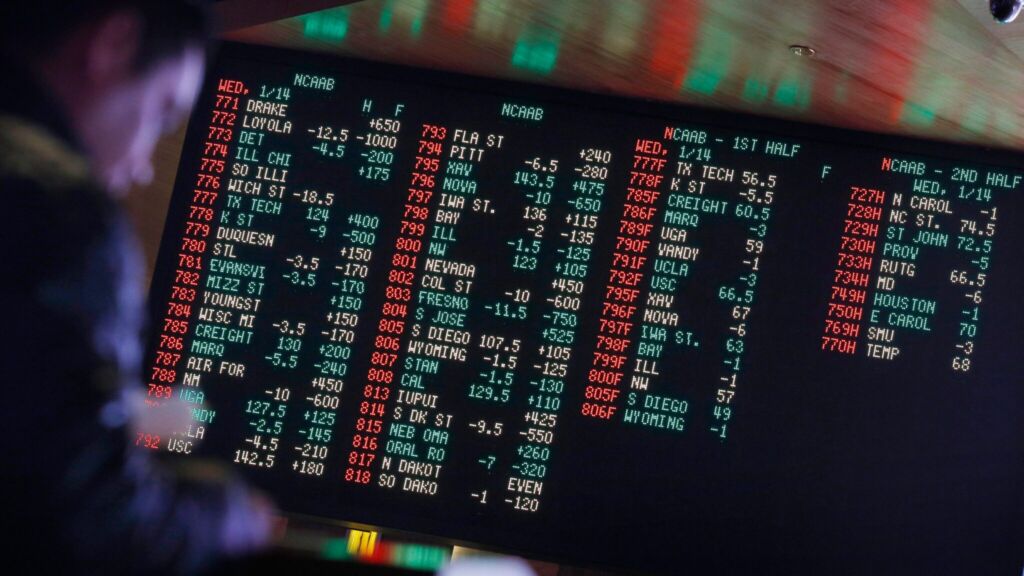Sports betting allows fans the chance to interact with their beloved games with the thrill of financial gain. Whether you're just starting out or aiming to deepen your understanding, mastering sports betting odds is key to placing smart bets. In this detailed guide, we'll thoroughly explore how sports betting odds function, the various types of odds you'll encounter, and how to interpret them for better betting outcomes.
What Are Sports Betting Odds?
In essence, sports betting odds depict the likelihood of a specific result occurring in a sporting event. They also help to calculate potential winnings. Typically, odds are shown in three formats: fractional, decimal, and moneyline. Grasping each one is crucial to navigating the betting world effectively.
How Odds Represent Probability
Sports betting odds act as a measurement of the chances of an event happening, converting them into a potential payout based on your stake. Higher odds suggest a lower likelihood of occurrence, while lower odds indicate a greater chance. By interpreting these odds into implied probabilities, you can spot bets with genuine value. The implied probability is calculated using the following:
Implied Probability = 1 / Odds
For instance, if a team has odds of 2/1 (fractional), its implied probability is derived as follows:
1 / (2/1) = 1 / 2 = 0.50 or 50% chance of winning
An Overview of Different Sports Betting Odds
Sports betting odds are formatted in three primary ways: fractional, decimal, and moneyline. Let's break down what each one means and how to use them.
1. Fractional Odds
Fractional odds are prevalent in the UK and Ireland. These odds are written as fractions like 5/1 or 10/3. Here, the first number tells you how much you win for a bet of the second number. For instance:
- If the odds are 5/1, this means for each $1 you risk, you can win $5 if the bet is successful.
- With odds of 10/3, wagering $3 can yield a $10 win if things go your way.
To figure out your total payout with fractional odds (including your initial bet), multiply your stake by the fractional odds and add your original stake. For example, a $10 bet with 5/1 odds results in potential earnings of:
10 * 5 = $50 + the initial $10 bet = $60 total payout
2. Decimal Odds
Decimal odds are favored in countries like Canada, Australia, and across parts of Europe. Presented as a decimal number, such as 2.00 or 3.75, they show the total payout for each $1 wager, including the initial bet amount. Here’s the breakdown:
- With decimal odds of 2.00, for every $1 bet, you'll get back $2 if you win, inclusive of your stake.
- Decimal odds of 1.50 mean that on a wager of $1, the return is $1.50 if it’s successful.
Calculate profit by subtracting 1 from the decimal odds, then multiplying by your stake. For example, at 2.00 odds with a $10 bet, your profit calculation would be:
2.00 – 1 = 1.00 (profit per $1 wagered)
$10 directly earned plus the original $10, giving a $20 total payout
3. Moneyline Odds
Moneyline odds, commonly used in the U.S., are either positive or negative numbers. A positive shows potential winnings from a $100 wager, while a negative shows the stake required to win $100. Here's a guide to moneyline odds:
- Positive Odds: A +200 moneyline means a $200 gain for every $100 bet. For instance, betting $50 on +200 odds gives this payout:
Gain of $100 in profit plus the original $50 results in a $150 return
- Negative Odds: A -150 moneyline indicates a $150 bet needed to win $100. So, with a $100 stake on a -150 line, the payout would be:
A profit of $66.67 alongside the initial $100 stake, creating a $166.67 payout
What Affects Sports Betting Odds?
Sports betting odds are dynamic, continuously evolving due to multiple factors. Understanding these can guide better betting decisions and uncover value. These key elements influence sports betting odds:
1. Team Form and Performance
Teams on a winning streak or with in-form players will generally show lower odds, highlighting the perceived likelihood of a win. In contrast, teams with poor performance records exhibit higher odds, indicating lesser expected success.
2. Injuries and Suspensions
Player injuries, bans, or roster movements can heavily influence odds. An unavailable crucial player often raises winning odds, reflecting decreased likelihoods of success. Bookmakers tweak odds to align with newly updated probabilities.
3. Betting Volume
High betting volumes on one team or result can shift odds due to bookmakers needing to balance stakes and mitigate risk.
4. External Events
External conditions like weather, venue alterations, or other factors can alter game outcomes. For example, a football game affected by rain might see odds change as teams react to such conditions differently.
Evaluating Expected Value (EV) in Sports Betting
A cornerstone concept in sports betting is Expected Value (EV), pivotal for assessing bet profitability over time. EV indicates the average financial expectancy from repeated bets based on odds and chances of happening. To compute EV, use this equation:
EV = (Probability of Winning * Winnings per Bet) – (Probability of Losing * Losses per Bet)
Consider a $100 bet with 2/1 odds (with a 33.33% chance): your potential gain is $200, so the EV works out as:
EV = (0.3333 * 200) – (0.6667 * 100)
EV = 66.66 – 66.67 = -$0.01
This reveals an average loss of 1 cent for every $100 over time. Understanding EV assists in determining which bets to pursue or avoid.
Fun Facts About Sports Betting Odds
- The Introduction of Odds: Originating in the 16th century with horse racing in England, the concept of odds has an age-old history.
- Dynamic Odds: As betting flows in, odds shift to stay balanced, helping bookmakers manage risk effectively.
- Odds and Public Perception: Sometimes odds echo not just likely outcomes but also public opinion. For instance, a well-loved team with copious betting might face reduced odds, even if their real winning chance isn’t significantly higher than a less-favored competitor.
Conclusion
Mastering sports betting odds is essential for any serious bettor. They reflect an event's probability, and a savvy understanding can enhance decision-making. Whether betting on favorite teams or assessing market value, deciphering and applying odds from varying formats is paramount. By employing thoughtful strategies and following the advice here, you pave the way for betting success.
Always remember, successful sports betting extends beyond mere luck—it's about employing strategy, insight, and comprehending the odds. Good luck with your bets!



